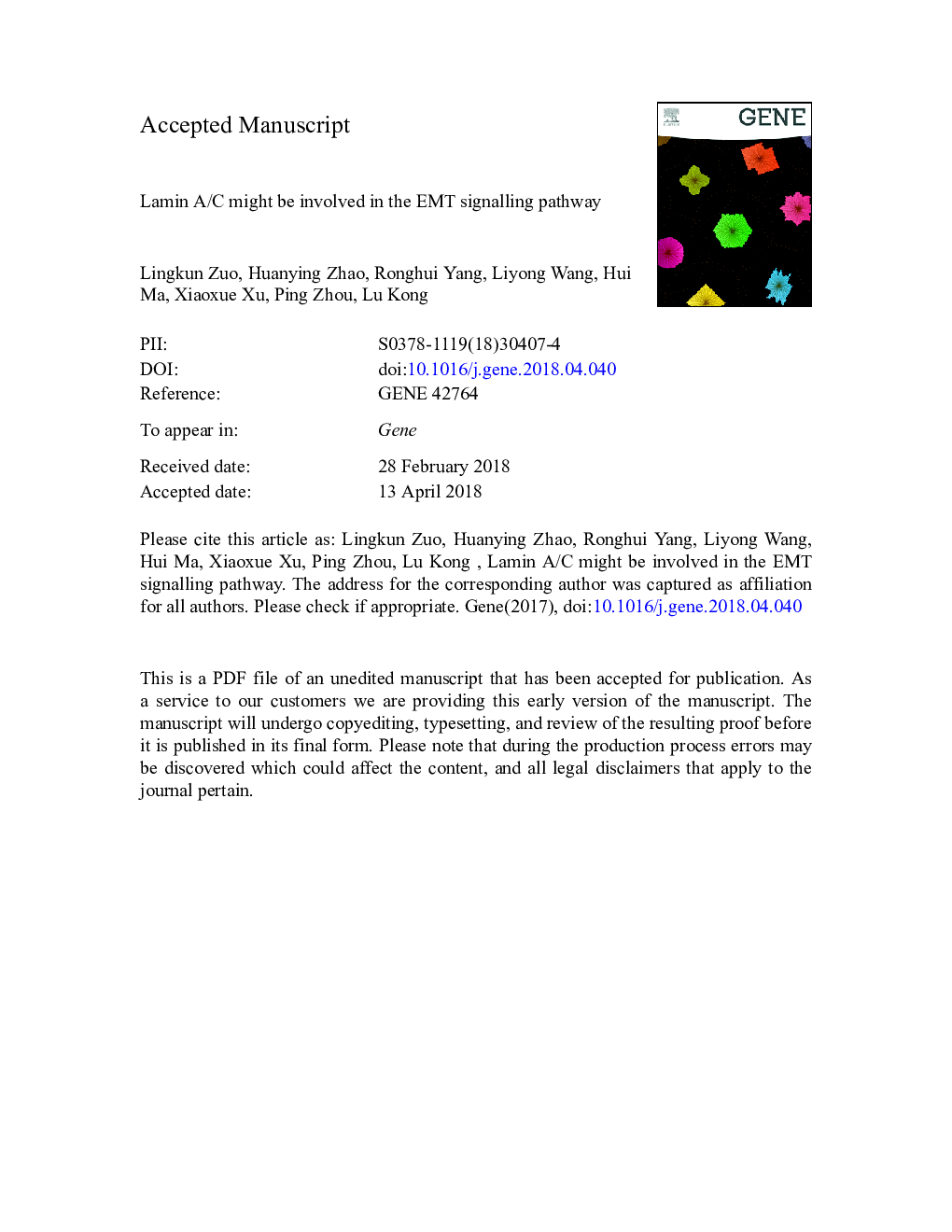| Article ID | Journal | Published Year | Pages | File Type |
|---|---|---|---|---|
| 8644998 | Gene | 2018 | 31 Pages |
Abstract
We have previously reported a heterogeneous expression pattern of the nuclear membrane protein lamin A/C in low- and high-Gleason score (GS) prostate cancer (PC) tissues, and we have now found that this change is not associated with LMNA mutations. This expression pattern appears to be similar to the process of epithelial to mesenchymal transition (EMT) or to that of mesenchymal to epithelial transition (MET). The role of lamin A/C in EMT or MET in PC remains unclear. Therefore, we first investigated the expression levels of and the associations between lamin A/C and several common EMT markers, such as E-cadherin, N-cadherin, β-catenin, snail, slug and vimentin in PC tissues with different GS values and in different cell lines with varying invasion abilities. Our results suggest that lamin A/C might constitute a type of epithelial marker that better signifies EMT and MET in PC tissue, since a decrease in lamin A/C expression in GS 4â¯+â¯5 cases is likely associated with the EMT process, while the re-expression of lamin A/C in GS 5â¯+â¯4 cases is likely linked with MET. The detailed GS better exhibited the changes in lamin A/C and the EMT markers examined. Lamin A/C overexpression or knockdown had an impact on EMT biomarkers in a cell model by direct regulation of β-catenin. Hence, we suggest that lamin A/C might serve as a reliable epithelial biomarker for the distinction of PC cell differentiation and might also be a fundamental factor in the occurrence of EMT or MET in PC.
Keywords
Related Topics
Life Sciences
Biochemistry, Genetics and Molecular Biology
Genetics
Authors
Lingkun Zuo, Huanying Zhao, Ronghui Yang, Liyong Wang, Hui Ma, Xiaoxue Xu, Ping Zhou, Lu Kong,
